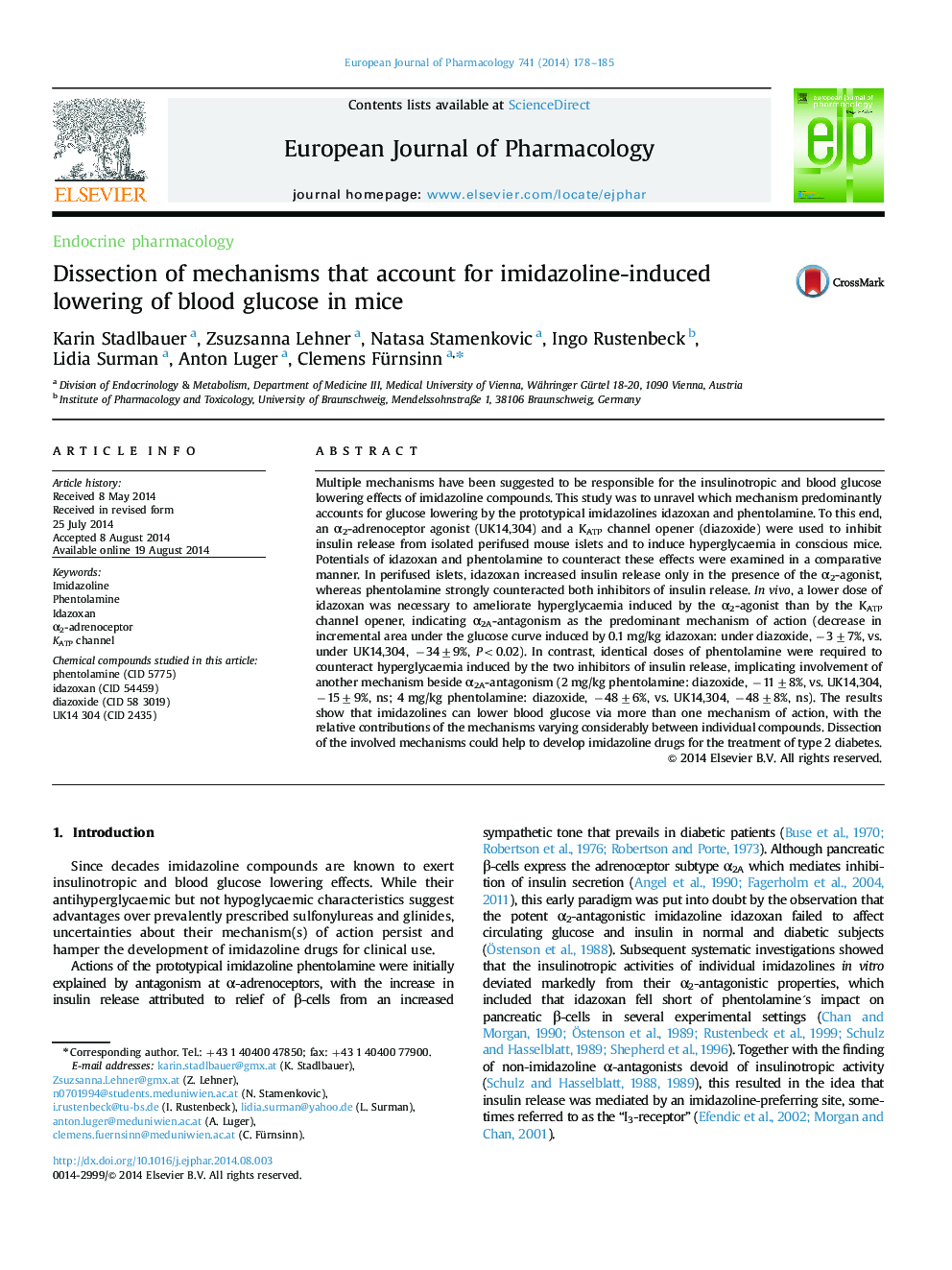| Article ID | Journal | Published Year | Pages | File Type |
|---|---|---|---|---|
| 5827680 | European Journal of Pharmacology | 2014 | 8 Pages |
Multiple mechanisms have been suggested to be responsible for the insulinotropic and blood glucose lowering effects of imidazoline compounds. This study was to unravel which mechanism predominantly accounts for glucose lowering by the prototypical imidazolines idazoxan and phentolamine. To this end, an α2-adrenoceptor agonist (UK14,304) and a KATP channel opener (diazoxide) were used to inhibit insulin release from isolated perifused mouse islets and to induce hyperglycaemia in conscious mice. Potentials of idazoxan and phentolamine to counteract these effects were examined in a comparative manner. In perifused islets, idazoxan increased insulin release only in the presence of the α2-agonist, whereas phentolamine strongly counteracted both inhibitors of insulin release. In vivo, a lower dose of idazoxan was necessary to ameliorate hyperglycaemia induced by the α2-agonist than by the KATP channel opener, indicating α2A-antagonism as the predominant mechanism of action (decrease in incremental area under the glucose curve induced by 0.1 mg/kg idazoxan: under diazoxide, â3±7%, vs. under UK14,304, â34±9%, P<0.02). In contrast, identical doses of phentolamine were required to counteract hyperglycaemia induced by the two inhibitors of insulin release, implicating involvement of another mechanism beside α2A-antagonism (2 mg/kg phentolamine: diazoxide, â11±8%, vs. UK14,304, â15±9%, ns; 4 mg/kg phentolamine: diazoxide, â48±6%, vs. UK14,304, â48±8%, ns). The results show that imidazolines can lower blood glucose via more than one mechanism of action, with the relative contributions of the mechanisms varying considerably between individual compounds. Dissection of the involved mechanisms could help to develop imidazoline drugs for the treatment of type 2 diabetes.
